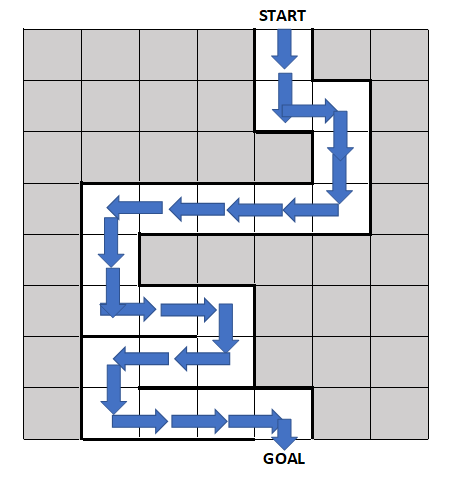I have seen many different leadership activities and games as a senior leader and a CEO for an MNC. Some of them are good, and, to be honest, some of them are a waste of time. I will introduce you to sixteen different leadership activities and games in this article. I am sure there are a few that would work well for your team in specific.
What are leadership activities?
Leadership activities are tasks and games that involve approaches and methodology which develop various skills. They focus on growth in crucial areas, such as planning, management, communication, conflict resolution, awareness, professional socialization, and responsibility.
Why are leadership activities important?
Leadership activities are essential for everyday life, transitioning into professional fields, and holistic personal development. Primary leadership skills are vital for numerous roles in real-world practices and are also beneficial for students.
Irrespective of your current role and position, leadership activities will provide countless opportunities to develop vital areas. Join us as we discuss some of the most impactful leadership activities, the value of leadership skills in numerous scenarios, and how beneficial they can be for individuals of varying backgrounds.
Contents
- Leadership Activities List: Examples of Leadership Activities
- Leadership Bonding Activities
- Leadership Activities for Managers
- Leadership Activities for Students
- Leadership Activities for Small groups
- Leadership Activities for Large Groups
- Leadership Activities with Legos
- Leadership Retreat Activities
- Leadership Simulation Activities
- Leadership Activities: Conclusions
Leadership Activities List: Examples of Leadership Activities
While every individual is unique in skill and character, just about everyone can benefit from developing leadership skills. Many practitioners include leadership activities in workplaces and schools, as there are countless invaluable benefits in developing the leadership activities of the employees.
Leadership activity skills are invaluable within the real world, making them beneficial for daily life, for people working in professional fields or preparing themselves for their industry, or students at schools or universities. The activities focus on developing skills including:
- Project planning
- Reflection
- Problem-solving and Creativity
- Team building
- Decision-making
- Goal setting
- Time management
- Resource allocation
- Communication and Networking
- Conflict resolution
- Diversity awareness
- Self-confidence
- Responsibility and Commitment
- Flexibility
Leadership activities are advantageous for just about anyone, depending on the difficulty level. You can include reflective approaches by asking questions about each individual’s experience and how to improve methods for the future. (Hint: check out our article on Creating a Leadership Development Plan.)
1. Build a Pyramid
Build a Pyramid involves groups of approximately 6 – 8 individuals. Each group should write an example of an excellent team quality on each of six plastic cups. The team then sets off on building a pyramid out of these six cups. Since it would be way too easy to use your hands, each group will need to use a rubber band tool to stack the cups into a pyramid formation. The team will use as many strings as they are team members, plus one rubber band, to manufacture the rubber band device. They can build the tool any way they want, but every team member needs to hold on to a piece of string whenever a cup is moved to form the pyramid. This activity is fantastic for building teamwork, communication, and developing an awareness of group dynamics.
Tip: You can exchange the writing of team qualities for anything that works for you and the situation you’re in presently. Perhaps write down six potential product names, six most important customers, six most outstanding achievements of the year, or something else. The idea is to create a moment of healthy reflection before the physical stage of the exercise starts.
2. Building a Bridge
Building a Bridge needs plenty of space and groups of around 6 – 8 people. Each group is divided into two subgroups, which will produce one end of the bridge each. The kicker is that the subgroups cannot see each other, and they can only align and communicate on the bridge design verbally. If the build is not identical, the two bridge halves will not go together, and the bridge will fail. Bridge building is excellent for exercising teamwork, communication, and creative problem-solving. This exercise also allows individuals to practice meeting objectives and criteria within timeframes. Feel free to use pretty much anything as building materials: paper, wooden pieces, tape, building blocks, strings, etc.
Tip: Use about an hour for this exercise and divide it into a briefing, discussion/design/planning, and building time. Remember to spend plenty of time afterward discussing how this went, what worked, what was challenging, and lessons learned.
3. Building a Tower
Groups will need to use wooden cubes to build a tower, with one team member acting as a leader and all the other people wearing blindfolds. The leader must verbally communicate with the others and guide them through building a sizeable tower made out of cubes. This activity is incredible for building communication skills, teamwork, and strategic thinking. The leading group member must effectively communicate the tower’s design and shape, while teammates must interpret provided information.
Tip: Have several teams competing at each other and impartial observers moving between groups. The competition element is to push and incentivize ingenuity. The observers witness different things that worked particularly well or things that ended up detrimental for the team effort that they can share with the whole group later on. (In case you are interested, you can read our article on leadership communication.)

4. Domino Build
You will need a few sets of dominos – one for the facilitator and one for each group that is participating in this exercise. One team member gets to look at the facilitator’s domino structure hidden from the group’s view. This team member must try to memorize it and report their findings to the rest of the team. The team will need to replicate the same design as the facilitator, making adjustments in turns by repeated visits of team members. Only one team member can touch the dominos at any time. This activity builds trust and communication, demanding attention to detail. The key is, of course, to put a time limit on this since it will be easy to complete otherwise. If you have several groups participating, you might want to make it a competition. But, will the team who finishes the domino first really have an identical build to the facilitators? Errors can give time penalties or disqualify the group entirely; it’s up to you to shape the game.
Tip: Scale the number of dominos used to the time allotted for the exercise. If you only have five minutes, use fewer dominos. Desire a more prolonged exercise? Use additional dominos.
5. Draw Like Me
Draw Like Me is a laidback and interactive leadership game, only demanding some drawings, markers, and paper. Pairs will have to work together to replicate the picture that only one of them can see. The person watching the drawing instructs the teammate what to draw, step by step in a detailed manner. The other person takes in the description, interprets it, and puts it on paper. The game primarily focuses on communication and listening skills. Once completed, you put the two drawings next to each other and gauge the resemblance. Remember to discuss what parts worked well and what didn’t. Were there specific words that provided more precise and clear communication and others that didn’t? Share the results and discuss with other pairs for benchmarking as well as having a good laugh together.
Tip: Don’t use overly complicated drawings since you don’t want to set people up for something impossible. The point is not to teach everyone attending that communication is impossible, right?
6. Mind Maze
Create a maze on the ground, or by using a tarp, with 8×8 or 10×10 squares marked with tape, with each square being large enough for a single person to stand inside. A facilitator has a secret map showing how to walk through the maze, but none of that is marked on the grid. A team member steps into a square, and the facilitator will say if this is a walkable square or not. The team member continues to walk until he or she hits a wall while the rest of the team observes. The team can now discuss how to move forward and decide when it’s time for the next team member to enter the maze following the steps of the previous one. The key here is to remember the right path. The whole team can assist with this, but there can be NO talking when anyone is inside the maze. It’s a simple but effective activity for supporting teamwork, collective memory and communication skills.
Tip: If you want to make this more difficult, place the maze further away from the team so they cannot see the progress. The team member returning from the maze will need to communicate what happened to the others, adding another aspect of memorizing and transferring that memory to others. If you want to do the exercise a bit faster, then let the participants know which square is the starting square; that will save some time.

7. Pipe Find
Pipe Find focuses on trust and communication, as participants will have to try and get blindfolded teammates to line up on a pipe, a rope, or a line in the floor, it does help if you can physically feel the marker. The trick is that no verbal communication can be used. As the blindfolded team members slowly wander across the room, the people with unobstructed vision will be spread out over the area. As a blindfolded person gets close to a seeing person, the latter can nudge the visually impaired teammate with a touch on the back or on the shoulder.
Tip: Make sure this does not end up with touching the wrong body parts or anything like this. People need to behave maturely, and you might want to avoid this exercise if you work with a team who aren’t adult enough to handle this properly. Suppose you want to make this exercise a bit more difficult. In that case, you can have the facilitator go around and randomly redirect some of the people now and then, but by using another pre-agreed type of touch, so the redirected person understands the difference.
8. Pop Fly Challenge
Using duct tape, paint stirrers, cups, ping pong balls, and a wooden block, participants will need to create a design that performs specific actions. The ball must be launched high enough to be caught by a freestanding cup. No hands can be used to catch the ball, and simply throwing the ball is not acceptable. It’s fantastic for developing planning, decision-making, and communication skills, but it also focuses on perseverance and strategy by working through trial and error. How will your team win the challenge: catapult design, slingshot, anything else innovative?
Tip: You can grow this challenge by using larger components and materials. I was once part of building a catapult for shooting a soccer ball by using planks, some nails, one rope, and a few other random items. It was great fun!

9. Centre Stage
Chosen team members will act out a typical scene in the workplace, such as an employee being late for work. One member will act as the employee, while the others will act out different leadership responses to the situation. This activity is fantastic for demonstrating various leadership approaches and sharing thoughts on each style’s effectiveness or appropriateness in various scenarios. Make sure to underline emotional intelligence aspects during this exercise. Why did the employee do this? What could he or she be thinking? How would different responses affect the employee?
Tip: Discuss the pros and cons of the different answers thoroughly since this provides additional perspectives and lets people understand what others saw in this situation. You can gather input for facilitation from our article on Coaching Leadership.
10.Minefield
In pairs, participants will need to guide each other through a ‘minefield’ of obstacles with specified communication approaches. The member traversing through obstacles will be blindfolded, while their partner will assist them using directional keywords – such as ‘forward’, ‘back’, ‘left’, and ‘right. This activity is effective for building trust and developing communication skills and can become a nice practice in movement skills at the same time.
Tip: Don’t hurt yourself or each other! Make sure the “minefield” consists of pillows and other harmless things.
11.Jumping Ship
Each group will need six sheets of paper – one for each of the Goleman leadership styles – and some writing equipment. They should note down realistic workplace scenarios where each style absolutely should not be used. This exercise underlines that not all leadership styles are helpful in all situations and spawn interesting situational discussions on which style is the most detrimental in each situation.
All writings and ideas should be placed somewhere visible and discussed as an entire group. This activity is ideal for supporting the development of effective use of leadership styles and empathy in the workplace. Refer to our article for additional information: Six Leadership Styles by Goleman.
Tip: This will be much easier if you agree on a set of different leadership styles to choose from before you start. An overview info sheet with the styles can be distributed to each participant. This way, you will use similar nomenclature, rather than leadership styles more or less invented on the go. I suggest you use the Six Leadership Styles by Goleman for this. Check out our article here: Six Leadership Styles. Download our overview sheet on the Six Leadership Styles by Goleman.

12.Magic Carpet
Facilitators will need to provide a rug or carpet large enough for all members to stand on or multiple carpets for teams. Everybody stands on the carpet; then the team starts figuring out how to flip the carpet over completely without anyone stepping off in the process. It’s an excellent activity for creative problem solving, strategic thinking, communication, and persevering through trial and error. On top of that, it is also very amusing!
Tip: If you have enough team members, have two teams work on one rug each next to each other, similar carpet size, of course. It will create an excellent feeling of competition.
13.Ducks in A Row
Ducks in a Row involves groups or pairs forming a 3 – 5 step strategy, helpful in challenging leadership situations. Each team gets a list of leadership situations or scenarios with short descriptions and spends time coming up with what actions they would take and how to handle that situation. After each team has come up with their approach, the entire group should assess all of the ideas and develop the best and most optimum strategy. This activity is excellent for encouraging strategic thinking, communication, and collaborative decision-making skills.
Tip: Use scenarios suitable to the expertise and experience of the team. If you are doing this with a fast food restaurant crew, consider scenarios such as angry customers, incorrect deliveries, a water leak in the kitchen, and similar. A senior business team should probably consider supply chain disruption, product re-call, legal problems, or other more complex scenarios.
14.Leadership style Matchmaking
All participants will need to write down a negative workplace scenario in need of a solution or intervention from management. The entire group should be divided into teams, and all the writings should be distributed, so each team gets a similar amount of scenarios.
The teams take turns to present the scenarios or a selection of them. After each presentation, all the teams need to assess the situation and allocate an appropriate leadership style or response that would work well in the situation as well as motivate why this is the best approach. This activity is effective for encouraging out-of-the-box thinking, empathy, and creative conflict resolution approaches. It also underlines that different leadership styles fit different scenarios and situations.
Tip: This will be much easier if you agree on a set of different leadership styles to choose from before you start. An overview info sheet with the styles can be distributed to each participant. This way, you will use similar nomenclature, rather than leadership styles more or less invented on the go. I suggest you use the Six Leadership Styles by Goleman for this. Check out our article here: Six Leadership Styles. Download our overview sheet on the Six Leadership Styles by Goleman. (You can also look at the situational leadership model if you prefer that one.)
15.Just Listen
This leadership activity is more of a challenge, as it can last throughout an entire day. Divide the team into pairs, have one participant pledge to refrain from talking, and purely listen to the teammate who describes opinions and thoughts on a topic randomly distributed by the activity leader. The listening teammate waits until the end and recaps what was said in-depth. You can set the times yourself, but talking for 3-5 minutes and the other person summarizing in 1-2 minutes is a good rule of thumb.
The activity underlines the need to really listen in a focused fashion. It also highlights how easy it is to misunderstand each other or forget details. It is excellent for encouraging empathy, listening skills, communication, and selflessness – all of which form a foundation for leadership.
Tip: Make sure to get some good topics that will work for anyone lined up before starting. Avoid conflict-rich issues; disagreement is not the target here.
Ensure that you discuss the experience afterward and how the team sees any learning moments and development steps to improve their listening skills.
Leadership Bonding Activities
Some great leadership activities for bonding include focusing on getting to know each other, sharing memories or experiences, or developing empathy for one another. These activities are seen as ice breakers but are nonetheless crucial for building strong teams, functional group dynamics, and constructive relationships.
I suggest that the leader goes first and sets the bar. If the leader shares a personal story that has affected his or her life, perhaps a childhood problem, a family crisis, or a great passion, it will be easier for others to follow. I have tried this both as a team member and a team leader. If done correctly, it creates an opportunity for people to really share intimate stories about life and death, grand challenges, personal insecurities, etc., which gives you a completely different perspective on each person. Just a word of caution: this exercise requires a very high level of trust in the team to work. People will not share essential things unless they completely trust all the members of the group. (Refer to Affiliative Leadership when it comes to building bonds with your team members.)
Leadership Activities for Managers
Leadership activities for managers should ideally focus on communication, facilitating others’ learning processes, conflict resolution, problem-solving, and organization. These leadership skills are vital for training and managing teams while building positive professional relationships with workers.
Leadership Activities for Students
Some great leadership activities for students include those that focus on developing time management, organization, project planning, creative problem solving, communication, and general teamwork skills. These areas are crucial for various scenarios and tasks in school and university and can improve approaches to projects, assignments, group tasks, and effective studying.
On top of this, I personally think that all the other activities mentioned in this article can also be helpful for students. The earlier you start developing your understanding of leadership, communication, and leadership skills, the better it is.
Leadership Activities for Small groups
Many practical leadership activities for small groups focus on building communication, teamwork, and trust. When working with small groups, it is much simpler to target socialization aspects, as there is less pressure or intimidation within the environment. You can use pretty much all of the leadership activities above for small group settings.
Leadership Activities for Large Groups
While many leadership activities involving teamwork, communication, conflict resolution, problem-solving, and strategic thinking are excellent for large groups, activities focusing on diversity are also good options. Working with large groups provides opportunities for sharing cultural experiences and building diversity tolerance, which is invaluable in workplaces and everyday life.
Besides this, you simply need to divide your large groups into subgroups of appropriate sizes for all the leadership activities mentioned above to work just as well as for small groups.
Leadership Activities with Legos
Legos are incredibly popular for leadership activities, as they are versatile and can be adjusted to suit any difficulty level. Some popular Lego leadership activities involve replicating structures or using Lego blocks to represent leadership qualities. The following leadership activities work particularly well with Lego blocks:
- Building a Bridge
- Building a Tower
- Domino Build
Refer to the descriptions of these activities further up in this article. In some cases, you might need to alter them a bit and use lego blocks instead, but that is a minor adjustment.

Leadership Retreat Activities
When planning leadership retreat activities, the options are endless with more time and space. Try to provide opportunities for fun, bonding, and plenty of reflective exercises with leadership activities, while focusing on each of the key leadership qualities in unison. Some great options for leadership retreat activities include team Scavenger Hunts and classic fun teamwork games.
Make sure you use various games and that there is something for everyone during the retreat. Consider limiting overly physical activities or at least supply alternatives since not everyone might be in great shape.
Leadership Simulation Activities
While it may take more time than many other options, many leadership games and activities focus on simulating real-world situations – whether in the workplace or everyday life. Different activities have varying approaches, ranging from brainstorming ideas to acting out scenarios. Either way, these are great for supporting empathy and widening participants’ mindsets, preparing them for numerous challenging situations.
If you prefer simulations, the following exercises mentioned above are particularly suitable: Centre Stage, Jumping Ship, and Leader Matchmaking are particularly relevant.
Leadership Activities: Conclusions
All leadership activity skills are advantageous in any scenario – including student life, professional or industrial situations, and even everyday tasks and routines. Leadership activities can broaden horizons by expanding mindsets and world views, allowing one to embrace opportunities when they arise and manage personal actions within an ever-changing world.
Sources
https://espace.library.uq.edu.au/
https://www.csun.edu/sites/default/files/leadership_booklet.pdf
https://intra.cbcs.usf.edu/common/file/HireABull/52-Leadership-Ideas.pdf
https://positivepsychology.com/leadership-activities/
https://www.edgepointlearning.com/blog/leadership-training-activities-for-employees/
https://www.stepshift.co.nz/blog/developing-team-performance-with-senior-leadership-teams/strategic-planning-with-an-independent-facilitator/leadership-training-activities.html
https://lead.gmu.edu/leadershipactivities/




